Results 3,511 to 3,520 of 12096
Thread: Anandtech News
-
01-05-14, 06:30 PM #3511
Anandtech: LenovoEMC Launches 4-bay px4-400d / px4-400r Business NAS Models
LenovoEMC's network storage family consists of three lineups:
- ARM-based EZ single-bay network attached hard disk for home users
- ARM-based ix series for value-focused consumers
- x86-based px series for performance-focused consumers (These come in both desktop and rackmount form-factors)
Starting this week, LenovoEMC is shipping two new models in the px series, the 4-bay Intel Atom-based px4-400d (in the desktop tower form factor) and the px4-400r (in the 1U rackmount form factor). The underlying hardware and software is the same for both systems and the form factor is the only difference.
The units are based on the Intel Atom D2701 running at 2.13 GHz. Equipped with 1 GB of Flash and 2 GB of DDR3 memory at 1333 MHz, the px4-400d/px4-400r supports hot-swapping of drives as well as volume encryption capabilities. The units also have two GbE ports, as is the norm in this class of NAS devices. All SATA ports are 6 Gbps. Unlike the previous generation pxX-300d units, the px4-400d and px4-400r come with a HDMI port for PC-less setup as well as monitoring of connected IP cameras with the MindTree VMS. We saw the availability of a PCIe slot in the px2-300d for adding analog surveillance cameras, and the slot is there in the px4-400d too. On the px4-400r, this expansion slot can be outfitted with an optional dual GbE NIC (though, I suspect users can do it at their end on the px4-400d too). An eSATA port, four USB 2.0 ports and a console port (serial IO) round up the back panel. We also have a USB 3.0 port in the front.
In terms of software, the p4-400d and px4-400r will be one of the first to get the new LifeLine 4.1 OS with Active Directory enhancements amongst other features. The bundled McAfee VirusScan Enterprise / ePO (ePolicy Orchestrator) provides centralized security management. The unit is certified for all major virtualization solutions including VMWare, Citrix XenServer and Microsoft Windows Server.
While other NAS vendors have been on the Atom D270x platform for quite some time now (I am expecting the move to Bay Trail / Avoton pretty soon), it is only now that LenovoEMC has moved from the D525 to D2701. The claim is that it brings a 25% improvement in read / write performance. Bay Trail / Avoton should also improve encryption related numbers as well as power efficiency. Keeping this in mind, it appears that the D2701 will only be used for a 4-bay model in this refresh cycle. Hopefully, LenovoEMC is able to bring out units based on leading edge platforms soon. That said, LenovoEMC's trump card in the market is the bundling aspect with their desktops, servers and other computing systems. I have already seen quite a few combo deals for LenovoEMC notebooks along with a tower NAS. These type of bundles are even more attractive for business users.
The diskless models of the px4-400d and px4-400r habe a suggested retail price of $729 and $1399 respectively. LenovoEMC includes server-class HDDs with the non-diskless models. The Pro series (available in Europe, Latin America and APAC regions) uses standard HDDs instead of the enterprise drives. The pricing for the px4-400r is expected to be below $1000.

More...
-
-
01-05-14, 11:00 PM #3513
Anandtech: NVIDIA Announces Tegra K1 SoC
At its CES press conference, NVIDIA finally revealed the marketing name for Project Logan - NVIDIA's latest mobile SoC: Tegra K1. 
NVIDIA hasn't said much about the architectural details about its latest Tegra SoC, other than to confirm that it features 192 CUDA cores. Since we already know Tegra K1 is based on NVIDIA's Kepler GPU architecture, and a single Kepler SMX features 192 CUDA cores, we know that K1 uses a single Kepler SMX. 
With K1, NVIDIA ditches the GeForce ULP GPU core that was present in the previous four generations of Tegra and moves mobile onto the same roadmap as the desktop/notebook GeForce. NVIDIA used the slide below that seems to imply convergence between the Tegra and GeForce architectures going forward, even beyond Kepler.

We'll be updating this post with more details as NVIDIA reveals them. 

More...
-
01-05-14, 11:30 PM #3514
Anandtech: NVIDIA Reveals First Details about Project Denver CPU Core
During its CES press conference, NVIDIA revealed its new Tegra K1 SoC will be available in two versions. One version will ship with four ARM Cortex A15s, while the other will ship with two NVIDIA designed Denver CPU cores. We don't know much about Denver other than it's a custom 7-wide superscalar 64-bit ARMv8 design.
NVIDIA claims very high single and multithreaded CPU performance. It's important to note that the Denver version only comes with two cores, something we've argued is likely the more optimal use of die area in mobile. Max frequencies top out at 2.5GHz. Given that NVIDIA has silicon back already I suspect this is a 28nm design. The L1 cache is 128KB + 64KB (I$ and D$?).
The Denver CPU cores will be paired with a 192 CUDA core Kepler implementation (1 SMX). No word on differences in power or performance. The Cortex A15 version of Tegra K1 will be available in 1H 2014, while the Denver version will be available in 2H. The two SoCs are pin-compatible, indicating that there won't be any difference in memory interface width.

More...
-
01-06-14, 03:30 AM #3515
Anandtech: MSI Motherboards at CES 2014: Kaveri and Socketed Kabini
Wrapping up our visit with MSI, we’ve already seen many of their already-launched motherboards (e.g. series 8 chipsets), but MSI did have some upcoming Kaveri motherboards on display with varying features and sizes. There’s not much to say about specs at present, but perhaps the more interesting boards (that we can actually discuss) are the two mini-ITX offerings. The first is a Kaveri platform, which is expected, but the second is the first instance of socketed Kabini motherboard that we’ve seen. The Kabini board recycles FS1, and it’s fun to see the difference in pin counts between the upcoming Kaveri socket and FS1b. It’s not entirely clear what the market is for the socketed Kabini chips, but presumably it’s an easier way for manufacturers to offer multiple performance options with mini-ITX Kabini systems.
Gallery: MSI Motherboards at CES 2014: Kaveri and Socketed Kabini

More...
-
01-06-14, 03:30 AM #3516
Anandtech: MSI GPUs at CES 2014: Massive R9 290X Lightning and More
Along with notebooks and all-in-ones, MSI had quite a few large GPUs on display. The past month saw a massive shortage of AMD GPUs, thanks in no small part to the surge in Bitcoin/Litecoin prices. Couple that with the holiday shopping season and the R9 290 and 290X have been selling for well over MSRP – R9 290 today continues to sell at $500 and more, while R9 290X has pushed into the $600+ range and even the rebadged R9 280X (7970 GHz Edition) has been selling at more than $100 over MSRP.
Into that mix, MSI is releasing a gigantic R9 290X with their triple-fan and triple-slot GPU. The R9 290X Lightning should have the cooling capacity to keep the Hawaii cores running at maximum performance, but the drawback of course is that running more than two such cards in a single case will prove problematic at best. For those who are looking for the performance of the R9 290X without the noise, however, this may be the perfect solution.
Several other GPUs were also being shown, most with large 80mm or larger fans. The GTX 760 ITX is interesting as well, in that it’s a potent GPU designed for use in smaller mini-ITX cases. (And like all things mini-ITX right now, don’t forget to mention the Steam Machines whenever you encounter a product for this market.)
Gallery: MSI GPUs at CES 2014: Massive R9 290X Lightning and More

More...
-
01-06-14, 08:00 AM #3517
Anandtech: NETGEAR at CES 2014: Network Range Extenders
This year at the Consumer Electronics Show in Las Vegas, NETGEAR are showcasing their latest line of Travel Routers and Range Extenders, including 802.11ac WiFi Range Entenders and associated Android Apps to find the best location for these routers.  We were sent the press releases ahead of time to show what NETGEAR are up to.
At CES 2014: NETGEAR Trek N300 / PR2000
The N300 is a portable device designed to extend any WiFi or LAN for local or private use, for example in hotels when on the road to create a separate private and firewalled hotspot.  It takes power either from the mains or USB, offers standard NETGEAR router firewall functions, and offers an extension antenna when required.  As the name N300 suggests, it offers 802.11n with up to 300 Mbps (presumably 2.4 GHz 2T2R) output.
The Trek N300 thus also acts as a small home WiFi range extender, or suitable for offices that need a private network while inside their main company network.  NETGEAR also have the usage scenario of providing better WiFi connections to devices such as televisions that might rely on slower standards (connect to TV via Ethernet and to home network via WiFi – use USB Power from TV).
The Trek N300 (SKU: PR2000) will be available in Q1 at an MSRP of $50.  The listed dimensions and weight are 3.39 x 3.31 x 1.30 inches and 0.355 lb (161g).
At CES 2014: NETGEAR AC750 WiFi Range Extender / EX6100
Billed as the first wall-plug 802.11AC WiFi Range Extender, the EX6100 uses dual band concurrency (2.4 GHz + 5 GHz) to supply b/g/n and AC devices with up to 300+433 Mbps WiFi capabilities.  The device itself uses onboard LEDs to direct a user to best placement in the home for range extension, along with two external antenna to improve performance.
In Access Point Mode, the EX6100 will create a new WiFi hotspot when connected to wired internet, and comes with a WiFi Analytics app in order to test which WiFi channels are best suited for the new hotspot or extension.
The EX6100 should come on the market during January at an MSRP of $90.
At CES 2014: NETGEAR A1200 WiFi Range Extender / EX6200
The EX6200 goes further than the E6100 by being a fully-fledged dual core range extender for the home and office.  It combines both a 5-port gigabit router and a 300+900 Mbps 802.11ac extender in the same device, using 5 dBi external (removable) antennas and 10 power amplifiers for 700 mW total WiFi output power.
Beamforming is coming into force with 802.11ac enabled devices, and the EX6200 uses this feature set to improve reliability, especially at long range.  When in WiFi bridge mode, this keeps the singular connection to the main router b and consistent for gaming and streaming.  The WiFi Analytics app is also available to help place the EX6200.
The EX6200 is scheduled to arrive in Q1 at an MSRP of $130.

More...
-
01-06-14, 09:00 AM #3518
Anandtech: NVIDIA Tegra K1 Preview & Architecture Analysis
NVIDIA has taken to using CES as its platform for launching members of its Tegra mobile SoC family. This year was no different as it shifted branding a bit in its announcement of the Tegra K1, formerly known as Project Logan.
With Tegra 2 NVIDIA’s big selling point was being first to dual-core in Android. Tegra 3 attempted to do the same with being first to quad-core. Tegra 4 just made things faster. Tegra K1 on the other hand does away with the gimmicks and instead focuses on fundamentals.
The SoC will come in two versions, one version with a quad-core (4+1) Cortex-A15, and one that leverages two of NVIDIA’s own 64-bit ARMv8 Denver CPUs. More importantly, they both ship with a full implementation of NVIDIA’s Kepler GPU architecture. In fact, Tegra K1 marks a substantial change in the way NVIDIA approaches mobile GPU design. From this point forward, all mobile GPUs will leverage the same architectures as NVIDIA’s desktop parts. As if that wasn’t enough, starting now, all future NVIDIA GeForce designs will begin first and foremost as mobile designs. NVIDIA just went from playing with mobile to dead serious in a heartbeat.

More...
-
01-06-14, 09:30 AM #3519
Anandtech: Imagination Technologies Announces PowerVR Series6XT Architecture & GPUs
With CES taking place this week a number of mobile announcements are in the pipeline. And in what has become something of a tradition for Imagination Technologies, they are using the backdrop of CES to make their annual PowerVR product announcements.
The big news out of Imagination this year is that PowerVR Series6 will be getting a refresh, with the company announcing the existence of their new Series 6XT architecture and that it’s immediately available for licensing. Series6XT is designed to be a moderate feature upgrade and power/performance optimization pass for Series6, integrating various innovations over the past couple of years to keep Imagination’s designs performance and feature competitive. Series6XT comes 2 years after Series6 licensing was announced at CES 2012, and roughly half a year after the first SoCs implementing Series6 GPUs were released to consumers.
So what’s new in Series6? Although Imagination does like to keep to high level details in their CES announcements, nothing out of the Series6XT announcement makes it sound like we’re looking at a significant overhaul of the Series6 architecture. Which means it’s safe to assume that we’re still looking at Imagination maintaining their Unified Shading Cluster (USC) design, a 16-wide scalar SIMD with each slot capable of up to 4 FP32 ops per clock. Other aspects of the design have been changed – various other functional blocks have been updated with new features to improve performance – but the fundamental architecture and execution model would appear to remain unchanged.
Similarly, this means that API support also remains unchanged, with OpenGL ES 3.0 remaining as the baseline for all Series6XT parts. Though it’s not immediately clear whether any of these specific designs are available in a Direct3D 11_1 configuration too.
Taking a look at what changes have been made, Series6XT will be gaining finer grained power gating through what Imagination is calling “PowerGearing G6XT” technology. Mobile class GPUs have featured power gating for some time – it being necessary in order to achieve the low power consumption today’s mobile devices shoot for at idle and in light workloads – with higher grained solutions offering even more efficiency gains by being able to shut off a larger percentage of the GPU when those resources aren’t required. For Series6XT, Imagination gains the ability to shut off individual USCs and other processing blocks within their GPUs, which should be especially beneficial in light workloads where the GPU can’t idle, but it doesn’t need to allocate all of its resources either.
Meanwhile when it comes to performance Imagination has made several improvements and optimizations for Series6XT, with Imagination claiming performance gains of up to 50% versus Series6. Among other things, Imagination has specifically targeted front end and back end performance on Series6XT, nothing that they’ve made changes to improve sustained polygon and pixel fillrate performance. Though it’s not clear whether these are simply optimizations of their existing hardware or if those blocks have been outright widened for greater throughput.
Elsewhere Series6XT also includes a new iteration of Imagination’s Hierarchical Scheduling Technology (HST) to further improve resource utilization, along with performance optimizations that draw from instruction set streamlining and some compute-specific data path optimizations. Of course none of this takes into account clockspeeds either; while Imagination’s designs are intended to cover a range of clockspeeds based on power/performance requirements, it’s a safe bet that Series6XT is designed to clock higher than Series6, as GPU and CPU clockspeeds have ratcheted up over the years.
Series6XT’s final set of new features comes through what Imagination is calling “PVR3C”, which is a catch-all name for all of the various compression technologies that Series6XT supports. New to Series6XT is support for Adaptive Scalable Texture Compression (ASTC), a variable block size texture compression algorithm being blessed and promoted by Khronos as the next generation of texture compression for both mobile and desktop devices. ASTC is designed to improve texture compression efficiency both by improving the quality attainable at any compression ratio while allowing the use of larger blocks to further reduce the data size of textures, going up to a 36:1 ratio at a block size of 12x12. Series6XT is the first design we’ve seen with support for ASTC (ed: tied with NVIDIA), though it is worth noting that it’s still fairly early in the game as ASTC is not yet part of the core specifications for OpenGL or OpenGL ES, as it’s still in its experimental extension stage. ASTC joins the other texture compression formats that Series6 supports, including the PVRTC series and ETC.
Texture compression aside, Series6XT also includes updates for lossless image compression and geometry compression. PVRIC, first introduced on the Series6 6x30 parts, is now up to PVRIC2, offering further improvements to compression throughput and performance. Meanwhile PVRGC is new to Series6XT, and is Imagination’s lossless geometry compression technology. Imagination’s press release doesn’t make it clear where PVRGC in particular is implemented, but from the description it sounds like this is an in-flight geometry compression technology, intended to reduce the amount of bandwidth needed to shuffle geometry within the GPU and between the GPU and its external RAM.
Wrapping things up, as Imagination is announcing that Series6XT is available for immediate licensing, we already have some information on the GPU designs being released. Series6XT parts will be under the GX prefix, with the GX6240, GX6250, GX6450, and GX6650 designs being released today. As alluded to by the part numbers, GX6240 and GX6250 are two cluster parts, while GX6450 is a four cluster part and GX6650 is a six cluster part. Furthermore of those parts, GX6240 is an area optimized part, while the rest are performance optimized. With Series6XT focusing so much on performance and optimization improvements, although it’s not stated as such, for area efficiency in higher performance designs Imagination appears to be pushing customers towards smaller Series6XT designs, rather than having slower versions of larger designs.
It’s worth noting that Imagination’s earlier Series6 designs also topped out at six clusters with G6630, so while Imagination is scaling up performance internally, we’re not seeing them go with outright wider GPUs for the Series6XT family (at least not yet). So Series6XT’s performance improvements will come from these internal changes, including performance optimizations and any wider blocks within.PowerVR Series6/6XT "Rogue" GPU # of Clusters # of FP32 Ops per Cluster Total FP32 Ops Optimization G6100 1 64 64 Area G6200 2 64 128 Area G6230 2 64 128 Performance GX6240 2 64? 128? Area GX6250 2 64? 128? Performance G6400 4 64 256 Area G6430 4 64 256 Performance GX6450 4 64? 256? Performance G6630 6 64 384 Performance GX6650 6 64? 384? Performance
Finally, while Imagination doesn’t provide a timeframe for consumer availability (since they only sell designs to chipmakers), based on the amount of time needed to integrate these designs into new products and then get those products in the hands of consumers, we should be looking at a timetable similar to the original Series6 designs. In which case Series6XT equipped SoCs would start appearing in 2015, likely in the latter half.

More...
-
01-06-14, 09:30 AM #3520
Anandtech: Imagination Technologies Announces Entry-Level PowerVR Series6XE GPU Famil
Going hand-in-hand with Imagination’s announcement of their new PowerVR Series6XT architecture and GPUs, Imagination is also announcing a new family of entry-level GPUs to further complement the Series6 family at the other end of the spectrum. These parts are designed for cost/area and power sensitive devices, and are the smallest GPUs offered within the Series6 family.
Unlike Series6XT, these parts aren’t a new architecture, rather they’re new designs based around the Series6/6XT architecture. That said, it’s not clear at this time whether any given part is Series6 or Series6XT based (or maybe a bit of both?), as the features available differ with the model, even though all are in the Series6XE family. Though the inclusion of PVRIC2 in some of these parts, a Series6XT feature, implies that at least some of these parts are derived from the new Series6XT.
Diving right into matters then, what’s more interesting is just what Imagination has done for the lower tier parts, G6050 and G6060. Whereas G1xxx parts have one compute cluster, these new low end parts half just half a compute cluster, which is smaller than what one would typically expect a GPU architecture to be capable of. Unfortunately as this information comes from a high level press release it’s not clear how Imagination has accomplished this.
The likely scenario is that the company has taken their 16-wide scalar SIMD based Unified Shading Cluster (USC) and reduced it to an 8-wide design, possibly also reducing the width of other components in the process. Interestingly, Imagination notes that their new half-cluster designs are ISA compatible with the Series6 ISA, our best guess is that Imagination is executing half a wavefront over each clock, completing the whole wavefront in 2 clocks on the G60xx series versus 1 clock for everything else.
Accompanying the G60xx parts are two new G61xx parts, the G6110 and the G6100 (which oddly is a new part with an old name). The G61xx parts implement a whole cluster and are designed to be follow-ups to the original G6100, Imagination’s low-end part for Series6. These parts are further updated and optimized versions of the original G6100, with Imagination noting that they now include a “high-performance texture mapping unit” in order to offer “the same raw [pixel] fillrates as multi-processor GPUs from the previous generation.”
As noted earlier, each configuration includes two parts and are designed to chase slightly different markets. While the G6050 and G6100 are the “base” parts, the G6060 and G6110 include Imagination’s new PVRIC2 lossless image compression technology, which further reduces the amount of memory bandwidth needed by the GPU by compressing render targets and other images. Imagination is specifically pitching these parts at manufacturers that want to go with even cheaper/simpler designs, as the bandwidth savings from PVRIC2 would allow them to go with less expensive memory configurations, ideally more than offsetting the higher cost of the design.
Wrapping things up, like today’s Series6XT announcement, Series6XE is being announced with immediate availability for licensing. So similar to Series6XT, we’d expect products integrating Series6XE GPUs to start hitting the market sometime in 2015.PowerVR Series6/6XE "Rogue" GPU # of Clusters # of FP32 Ops per Cluster Total FP32 Ops Optimization G6050 0.5* 32? 32? Area G6060 0.5* 32? 32? Area + Bandwidth G6100 1 64 64 Area G6100 (XE) 1 64? 64? Area G6110 1 64? 64? Area + Bandwidth G6200 2 64 128 Area G6230 2 64 128 Performance G6400 4 64 256 Area G6430 4 64 256 Performance

More...
Thread Information
Users Browsing this Thread
There are currently 53 users browsing this thread. (0 members and 53 guests)




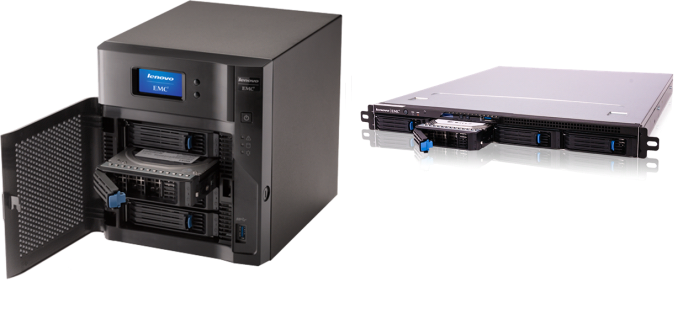






 Quote
Quote
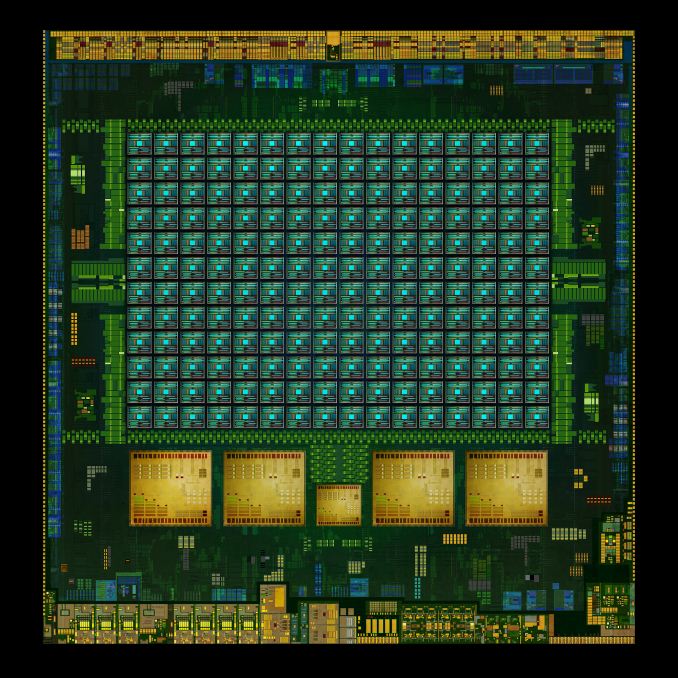

_575px.JPG)
_thumb.JPG)
_thumb.JPG)
_thumb.JPG)
_thumb.JPG)
_575px.JPG)
_thumb.JPG)
_thumb.JPG)
_thumb.JPG)
_thumb.JPG)
_thumb.JPG)
_thumb.JPG)

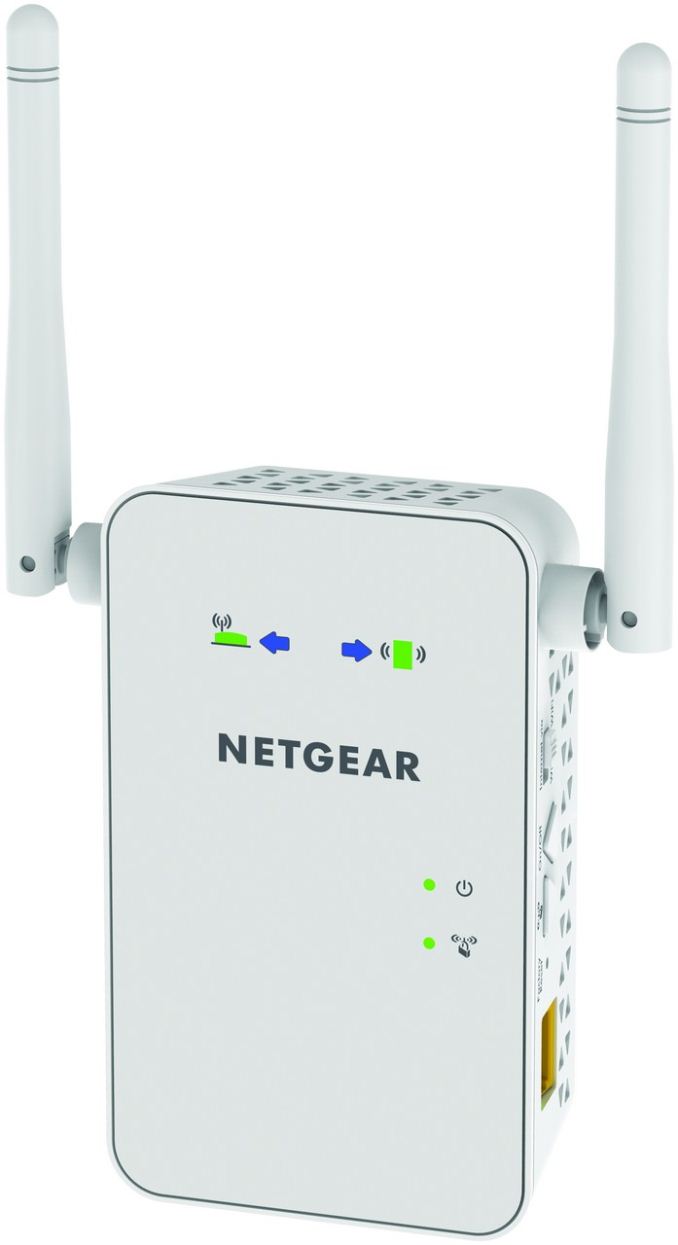


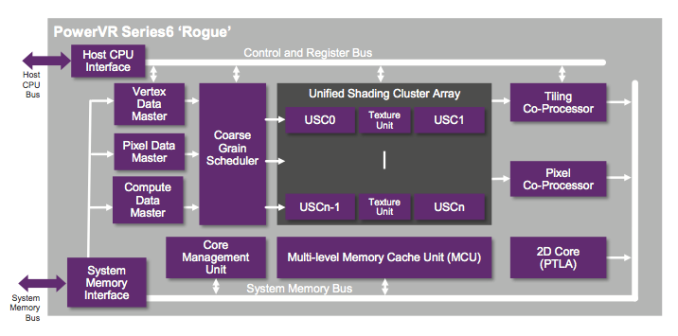
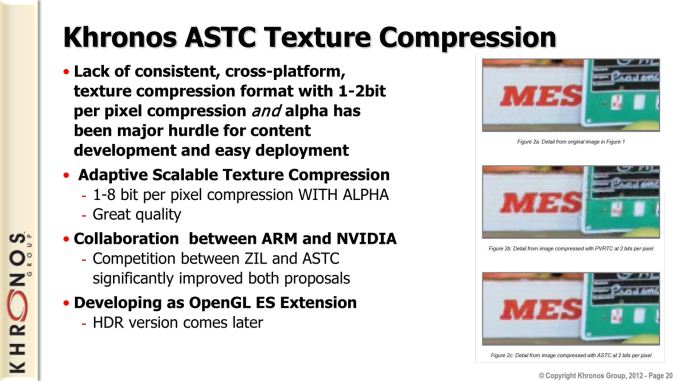


















Bookmarks